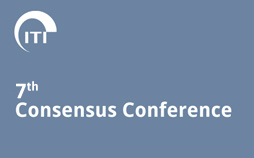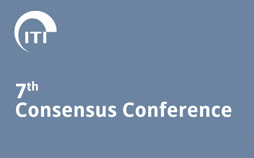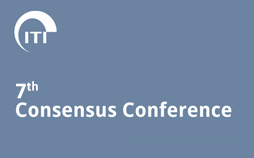
Influence of Buccal Bone Wall Thickness on the Peri-Implant Hard and Soft Tissue Dimensional Changes
Consensus Statements
Consensus Statement 1: The alveolar ridge is subjected to buccolingual dimensional reduction during initial healing after implant placement in healed sites. This statement was supported by two prospective clinical studies and one preclinical study. Reduction of BBW is observed after implant placement in healed sites (0.3 to 1.8 mm; up to 72 months). This statement was supported by 11 prospective clinical studies.
Consensus Statement 2: After implant placement in healed sites with a thin BBW, vertical bone loss occurs during initial healing. This statement was supported by five prospective, two retrospective clinical studies, and 1 preclinical study..
Consensus Statement 3: Implants with buccal dehiscence defects undergoing simultaneous guided bone regeneration, show less vertical bone loss, and more favorable clinical and radiographic outcomes, compared to nonaugmented dehiscence defects during initial healing. This statement was supported by one RCT (22 patients, 28 implants).
Consensus Statement 4: Implants placed in healed sites exhibiting thin BBWs, not undergoing simultaneous bone augmentation, are prone to less favorable clinical (i.e., increased peri-implant probing pocket depth, bleeding on probing, suppuration or mucosal recession), and radiographic outcomes. This statement was supported by six prospective clinical studies and one preclinical study
Clinical Recommendations:
1) Do we need an intact buccal bone wall for long-term peri-implant health?
An intact buccal bone wall is necessary to avoid exposure to the implant surface designed to be inside the bone, such as a microrough surface. Therefore, simultaneous bone augmentation is recommended in cases of buccal dehiscence defects or a thin buccal bone wall to maintain long-term peri-implant health. However, when soft tissue conditions are favorable, peri-implant health can be maintained in the presence of minor buccal bone deficiencies.
2) How thick should the buccal bone wall be after implant placement in healed sites?
A buccal bone wall thickness of >1.5 mm is recommended at the time of implant placement to promote long-term peri-implant health. 46 | JENSEN et al. Aside from bone augmentation, this may, in selected cases, be achieved by reducing implant diameter, placing the implant deeper in the alveolar crest, or flattening the alveolar ridge (in the posterior region).
3) Is bone augmentation per se enough to achieve a satisfying aesthetic result?
In the majority of cases, simultaneous bone augmentation can achieve satisfactory aesthetic results. However, in cases with high aesthetic demands exhibiting a thin soft tissue phenotype or a soft tissue deficiency, an additional STA procedure is recommended.
Patient Perspective
1) Do I have enough bone for an implant to be placed?
To answer this, we first need to examine your mouth, take radiographs and plan the best position for the implant. At this point, we can determine if there will be enough bone around it. The bone needs to be 1.5 mm thick on the cheek/ lip side of the implant and 1 mm thick on the palate/tongue side. So if the implant is 4 mm in diameter the bone needs to be 6.5–7 mm wide.
2) Can I have a bone graft at the same time as the implant is placed?
Yes, it can be done at the same time, but it depends on how much grafting is required and how stable the implant is when it is placed. If we can place an implant in the correct position with good stability but still lack some bone thickness in places (see Section 2.5.1), then a bone graft can be performed at the same time.
3) Will the bone graft come from my mouth or from elsewhere?
In most cases, we can collect bone from the same site where the implant is being placed. When a greater amount of bone is needed, we may need to go to a second surgical site inside your mouth. Often, however, the use of a bone substitute material, alone or in combination with your own bone, will avoid the need to use bone from other surgical sites.
4) When do I get my crown after implant placement and bone grafting?
In a routine case, you will need to wait 2–3 months after implant placement and bone grafting for a fixed temporary crown. With a more complex situation, it may take up to 6 months. In addition, some aesthetic changes may take place during healing, so it may take 6–9 months for the final crown to be delivered.
5) Will I need antibiotics after the implant surgery?
This is a controversial topic. If bone grafting is required, we would recommend antibiotics. These can either be given before surgery, after surgery, or both. For implant placement, it will depend on your medical risk factors.
Downloads and References
Related items
Share this page
Download the QR code with a link to this page and use it in your presentations or share it on social media.
Download QR code
